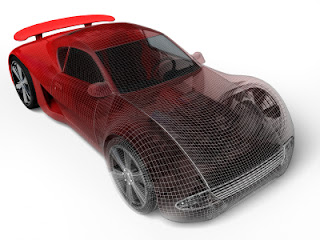Jump to: navigation, search
Class A surfaces is a term used in automotive design to describe a set of free form surfaces of high efficiency and quality. Although, strictly, it is nothing more than saying the surfaces have curvature and tang ency alignment - to ideal aesthetically reflection quality, many people interpret class A surfaces to have G2 (or even G3) curvature continuity to one another (see free form surface modelling).
Class A surfaces is a term used in automotive design to describe a set of free form surfaces of high efficiency and quality. Although, strictly, it is nothing more than saying the surfaces have curvature and tang ency alignment - to ideal aesthetically reflection quality, many people interpret class A surfaces to have G2 (or even G3) curvature continuity to one another (see free form surface modelling).
Class A surfacing is done using
computer-aided industrial design applications. Class A surface modellers
are also called "digital sculptors" in the industry. Industrial
Designers develop their design styling through the A surface, the
physical surface the end user can feel, touch, see etc.
A common method of working is to start
with a prototype model and produce smooth mathematical Class A surfaces
to describe the products outer body. From this the production of tools
and inspection of finished parts can be carried out. Class A surfacing
complements the prototype modelling stage by reducing time and
increasing control over design iterations.
A class A surface can be defined as any surface that has styling intent.







